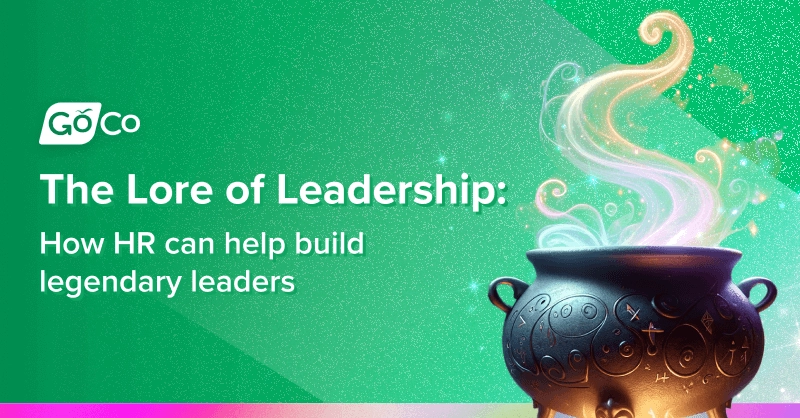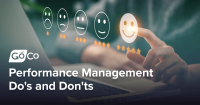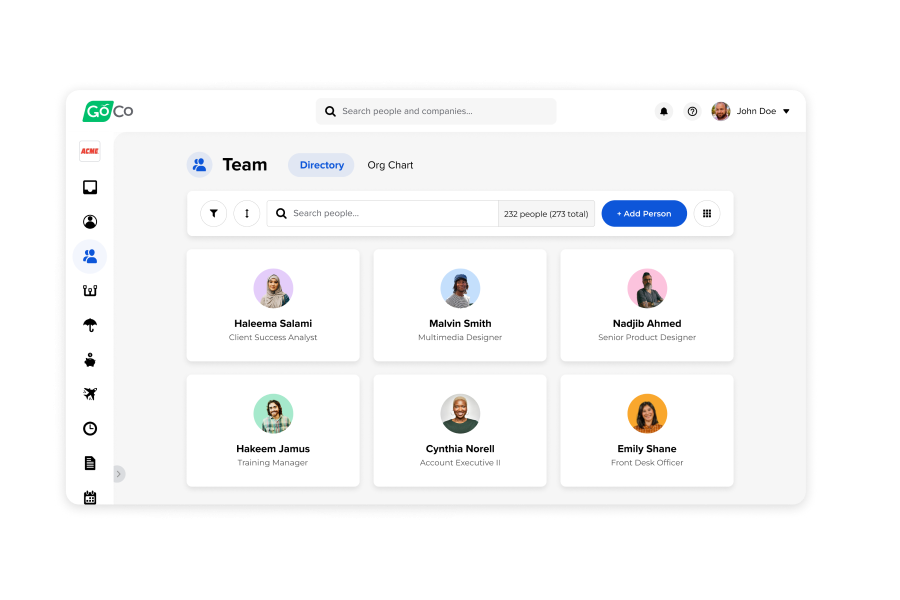The Lore of Leadership: How HR Can Help Create Legendary Leaders
Learn how a solid leadership development and employee advancement plan can lead to improved employee retention.
by Elle Mason - March 14th, 2024
While we all might occasionally fantasize about a long life spent lazing the days away in a castle, humans are wired to want to contribute to society or challenge themselves in some way. Although the day-to-day vision of what that looks like will differ for all of us, one of the quickest ways to lose employee engagement is to fail them in terms of development.
Without sufficient opportunities to stretch themselves, introduce variety, or develop and grow, most employees will eventually become demotivated and less productive over time – making leadership development programs and employee growth and advancement plans a critical need across industries.
Though leadership development and supporting employee advancement have always been part of the HR agenda, the desperate need to attract and retain employees today has further emphasized the need for HR to have a solid leadership development plan or an employee advancement and growth plan.
In this guide, we will show you how to transform leadership development in your organization from mundane to magical. Let's get started!
Why is leadership development important?
Leadership development benefits employees and the organization as a whole. It allows managers to begin building a succession pipeline for their eventual departure and, in the meantime, enjoy a more empowered and competent workforce through ongoing development.
Leadership development can also be linked and aligned with the broader business strategy and goals while supporting the organizational mission and strategic plans. Employees can benefit from being challenged and improved in ways that are often transferrable to their daily lives or future career plans.
Investing in leadership development can improve organizational alignment and strong financial and bottom-line performance. It can also enhance an organization’s ability to attract and retain talent, improve employee experiences and customer outcomes, and strengthen its sense of adaptability to change.
What is a leadership development plan?
From an HR perspective, leadership development can broadly be defined as general activities designed to assess, improve, and promote the skills of people in the organization.
While there is often a focus on current or potential future management, these activities can be applied to anyone at any level. This may come through mentorship, coaching, training, and beyond.
How can HR guide leadership development training?
HR plays a critical role in leadership development. Management doesn’t always have insight into which roles correspond directly to a particular strategy – but HR typically does. Further, HR is positioned to generate buy-in and work alongside leadership.
But the needs go beyond support – HR can also lead the training, development, and promotional structures and create systems for identifying leaders, assessing skills gaps, and growing employees.
Because of the way that the function overlaps with other leadership areas, HR is primed to keep the process of developing leadership skills employee-centered and team-based.
The intergenerational nature of work is making training and development more critical than ever, especially with Gen Z entering the workforce and 10,000 baby boomers reaching the age of retirement (65) in the U.S. every day.
Millennials comprise almost half of the workforce, but a large percentage of them plan to stay at their jobs for fewer than three years. Additionally, a survey by Gallup revealed that 87% of millennials emphasize learning and development when looking for jobs.
How to Create an Effective Leadership Development Plan
Leadership development will look drastically different depending on your industry and the role that you’re aiming to develop. While mentorship might be the best fit for some, training and upskilling will be critical for others. But in order to get started, HR leaders and managers should reflect on a few key questions.
What skills should employees learn?
In order to determine this, leaders should have a baseline understanding of the skills that will be needed in the future, which they can determine with the help of leadership. The skills can also be ranked or weighted for importance and/or value.
Some skills that may be critical when you’re an individual contributor are nearly irrelevant when you’re managing – since you’ll oversee a team that is making contributions in that phase.
What skill gaps are currently present?
Once you’ve defined the skills needed, an assessment of the employee’s current skills should be undertaken in order to determine the size of the gap and what they’ve already mastered versus where there’s room for improvement.
A Senior Programmer, for example, may not need additional technical knowledge, but learning how to delegate or coach people is a new area that they can grow into.
Once you have determined skill gaps and what needs to be learned, it is time to set goals for the individual. When setting these goals, ensure that they are specific, measurable, achievable, relevant, and time-bound (SMART) goals.
What relationships need to be built?
Developing and fostering relationships becomes increasingly important as employees develop into future leaders. Learning who the key stakeholders are, how everyone functions together, and how to manage those relationships will be critical to define.
What tasks can be delegated?
This can work in several ways. Current leaders need to determine how they can slowly begin delegating their current tasks to help hone the skills of their next leaders. Similarly, aspiring leaders who are training to move to the next level may begin delegating tasks to the people who report to them to help train that generation and focus on new duties.
All of these questions and considerations will help bring clarity to the best approach for your leadership development plan while also helping you to identify early who could potentially be a good fit.
How GoCo Can Help With Leadership Development
Leadership development doesn’t have to be another item on your always-growing to-do list – GoCo can help!
Gauge Employee Sentiment - With GoCo’s employee survey automation workflow, HR can easily create standardized questions and report on data to better understand how to support employees and their growth goals.
Performance reviews - Automated performance reviews in GoCo allow employees to track past progress between reviews, identify the next milestones, and understand how to achieve their goals. They can track feedback, add notes, and review with their direct managers.
An HRIS that Empowers Employees—Having a digital HRIS where employees are empowered to see all of the company’s policies and time-off information helps ensure that there are no surprises for them and that they are constantly in the loop with their progress and their data.
Want to see for yourself how GoCo can help position your organization and employees for success? Take a free tour of our platform today!
Recommended Posts
How HR Can Think Like a Marketer: Engagement
Blog Articles
Search...
Product
GoCo
Resources
Articles
eBooks
Webinars
Customer Stories






